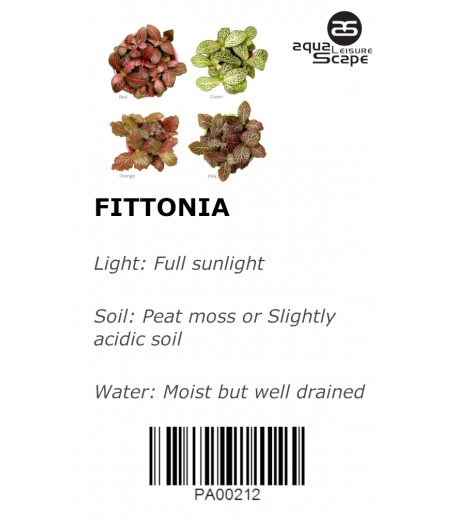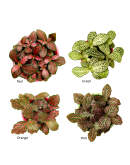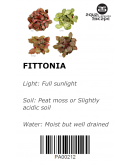Nerve plants (Fittonia albivenis) is commonly used as a potted houseplant for decor and livelihood. It is an evergreen perennial with veiner, deep green, egg-shaped leaves called ovate. Although the most popular vein color is a silvery-white, they come in a variety of colors including pink, red, green, and white.
They are not tall plants, growing around three to six inches, but do have a greater trailing spread usually between 12 and 18 inches. They are slow to grow and rarely flower indoors.
In a frost-free climate, nerve plants can be grown as a creeping ground cover in areas with filtered sun, and will bloom with significant reddish or yellowish-white spikes when the conditions are right.
| Common Names | Nerve plant, mosaic plant, fittonia, painted net leaf |
| Botanical Name | Fittonia albivenis |
| Family | Acanthaceae |
| Plant Type | Perennial |
| Mature Size | 3–6 in. tall, 12-18 in. spread |
| Sun Exposure | Partial |
| Soil Type | Moist but well-drained |
| Soil pH | Acidic |
| Bloom Time | Summer |
| Flower Color | White, red |
| Hardiness Zones | 11 (USDA) |
| Native Area | South America |
Light
As a tropical plant that naturally grows in the humid, bright shade of tropical forests, this plant prefers similar conditions when grown as a houseplant. It dislikes full sunlight, preferring bright, indirect sun, such as that offered by north-facing windows.
Keep a nerve plant under fluorescent lights or near diffused light coming in from a sheer curtain. Another good location is in the bathroom, even if there's low lighting.
Soil
Nerve plant grows well in standard potting soil with a peat moss base. It prefers a slightly acidic soil pH. The soil should retain some moisture but should also drain well.
Water
Keeping the plant appropriately moist can be a challenge. Nerve plant is prone to collapse if it's allowed to dry out. Although it will recover quickly if thoroughly watered, repeated fainting spells will eventually take their toll on the plant.
At the other extreme, nerve plants that are allowed to stagnate in water will develop yellowed, limp leaves. If you are unsure, use a moisture meter to help you determine when to water.
Temperature and Humidity
Nerve plant thrives at temperatures around 70 degrees but will tolerate a range from the low 60s to low 80s. These plants prefer humid conditions similar to those found in rainforests. Regular misting will keep the plants from drying out.
In arid climates or during the dry months of winter, using a room humidifier may be helpful. Most growers find it easiest to grow these plants in terrariums, bottle gardens, or covered gardens where they get high humidity and diffused light. They also do well in steamy bathrooms.
Reviews
There are no reviews for this product.





